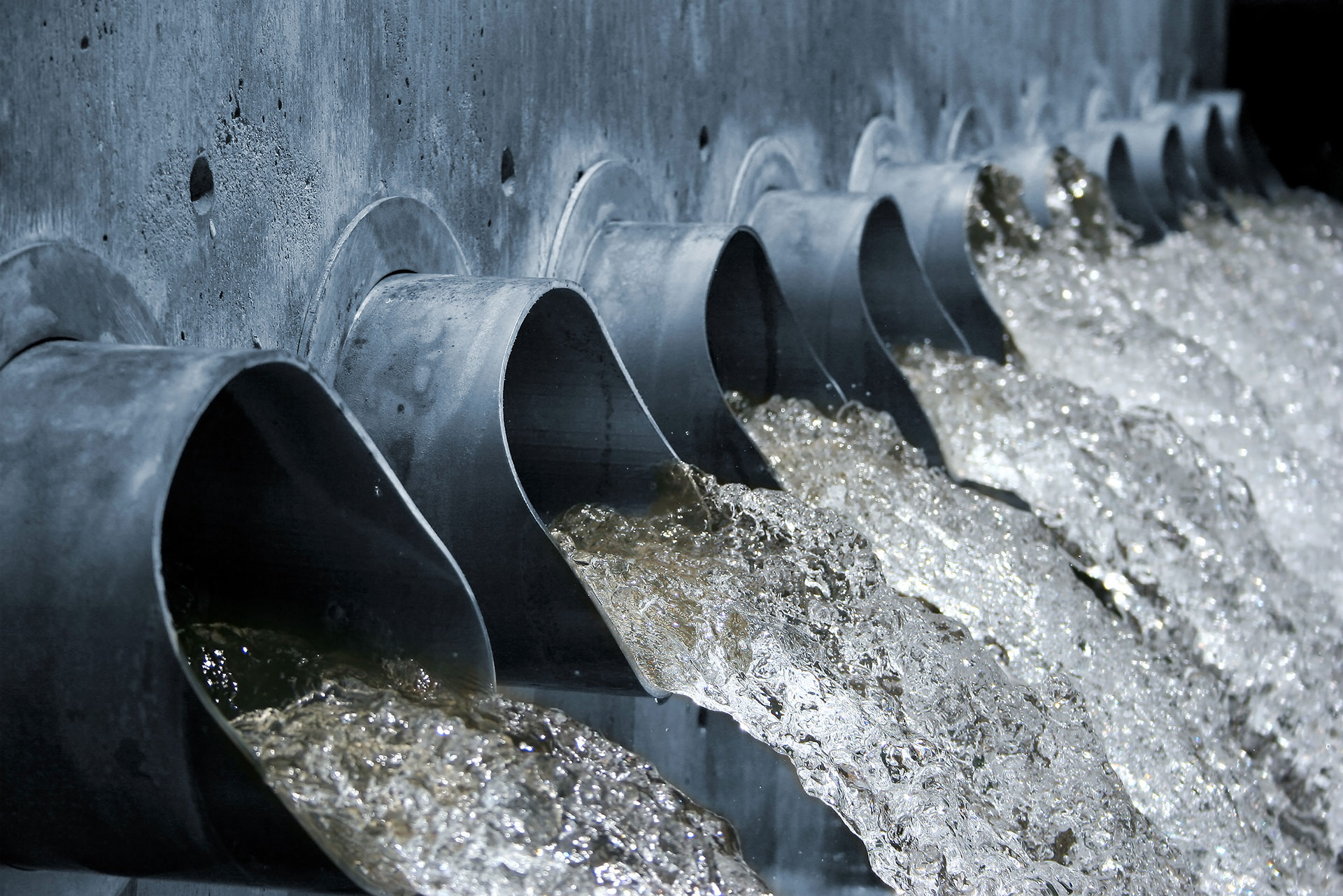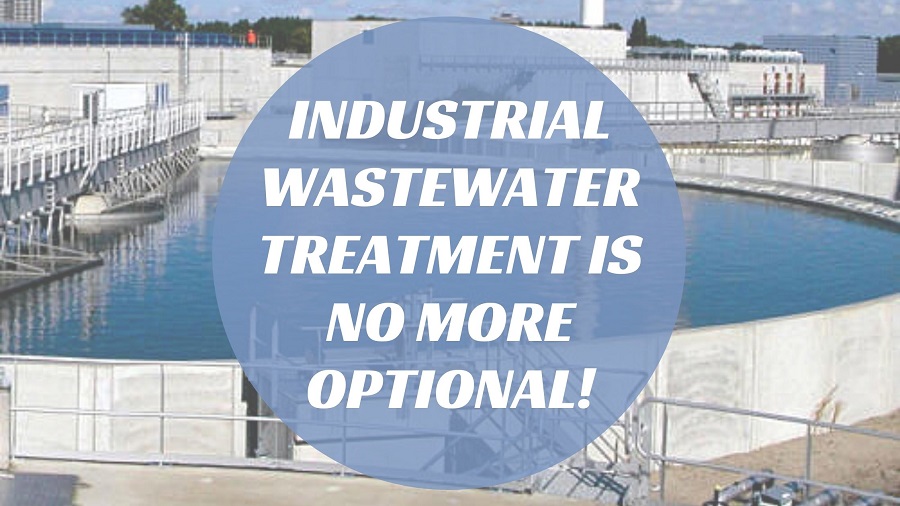Industrial Waste Water Treatment-- Lasting Solutions for Industrial Water Administration
Industrial Waste Water Treatment-- Lasting Solutions for Industrial Water Administration
Blog Article
Innovations and Advancements in Industrial Waste Water Therapy Technologies
The landscape of industrial wastewater treatment is going through a transformative shift, driven by technologies that enhance both efficiency and sustainability. As governing criteria advance, the integration of AI and machine learning into wastewater monitoring systems guarantees to make certain and streamline operations conformity.
Introduction of Drainage Treatment Technologies
Wastewater therapy modern technologies encompass an array of methods developed to eliminate contaminants from industrial effluents prior to their launch right into the environment. These innovations are vital for preserving environmental equilibrium and guaranteeing conformity with environmental policies. The key categories of wastewater therapy include physical, chemical, and biological methods, each offering distinctive objectives based upon the nature of the impurities present.

Organic treatment approaches use microorganisms to degrade natural issue, making them specifically efficient for organic-rich effluents. Strategies like triggered sludge and biofilm activators harness the natural destruction capabilities of germs, leading to considerable reductions in biochemical oxygen demand (FIGURE)
Advanced Purification Methods
Advanced filtering techniques represent an important development in the world of commercial wastewater treatment, boosting the performance of pollutant elimination procedures. Industrial Waste Water Treatment. These techniques incorporate an array of innovations, consisting of microfiltration, ultrafiltration, nanofiltration, and turn around osmosis, which give sequential barriers for different particle sizes and chemical frameworks
Microfiltration and ultrafiltration make use of membrane layer systems to eliminate put on hold solids, germs, and larger organic molecules, improving the high quality of effluent previous to further treatment. Nanofiltration connects the gap in between ultrafiltration and turn around osmosis, successfully removing natural substances and divalent ions, therefore reducing the tons on downstream procedures.
Reverse osmosis supplies the highest degree of purification by allowing just water and small particles to pass with its semi-permeable membrane layers, making it ideal for recovering top notch water from industrial effluents. Recent improvements in membrane layer modern technology, consisting of the development of even more fouling-resistant and long lasting products, have actually significantly enhanced operational efficiency and decreased costs.
Including these advanced filtration techniques not only boosts the total therapy process yet likewise adds to sustainability efforts by allowing water reuse and resource recovery in commercial setups. (Industrial Waste Water Treatment)
Biological Treatment Technologies

In addition, the growth of crafted organic systems, such as membrane bioreactors (MBRs), integrates organic treatment with innovative membrane purification. This assimilation permits greater effluent high quality and reduced footprint, making it appropriate for space-constrained industrial centers. Advancements in genetically crafted bacteria have actually also arised, boosting the biodegradation of details impurities, such as drugs and hefty metals, that are generally challenging to remove.
In addition, the execution of bioaugmentation approaches, where useful microbes are presented to improve the existing biological treatment processes, has actually revealed appealing cause enhancing therapy performance. These innovations jointly signify a fad in the direction get more of more effective and lasting organic treatment methodologies that can adjust to the developing intricacies of commercial wastewater streams. As markets remain to focus on environmental compliance, these organic developments will play an important duty in wastewater administration.

Resource Healing Techniques
In commercial settings, the assimilation of source recuperation techniques has actually become increasingly important for improving sustainability and decreasing waste. These techniques concentrate on drawing out beneficial materials and energy from wastewater streams, consequently transforming potential pollutants right into multiple-use resources.
One popular method is nutrient healing, where nitrogen and phosphorus, commonly present over in wastewater, are recorded and exchanged plant foods. This not only minimizes ecological effects however official website also supplies a round economy remedy for farming applications. Furthermore, modern technologies such as anaerobic digestion permit for the conversion of organic waste into biogas, a renewable resource source that can counter nonrenewable fuel source usage in industrial procedures.
In addition, advanced purification and membrane innovations promote the healing of industrial spin-offs such as steels and salts. These recuperated products can be rehabilitated right into manufacturing procedures, minimizing the demand for virgin resources.
Future Patterns in Waste Water Monitoring
As markets significantly prioritize sustainability, the future of wastewater management is established to undergo considerable makeovers. Technological innovations, such as expert system and artificial intelligence, will enable much more effective monitoring and management of wastewater systems. These modern technologies can forecast upkeep demands, optimize therapy procedures, and boost decision-making, eventually minimizing operational costs and ecological influence.
In addition, the combination of circular economy principles will certainly play a crucial duty in wastewater management. Industries are expected to move in the direction of systems that not only treat wastewater but additionally recoup important resources, such as nutrients, water, and power. This transition will reduce waste and advertise the reuse of products, straightening with worldwide sustainability goals.
Emerging treatment methods, such as membrane bioreactors and progressed oxidation processes, will certainly additionally improve the effectiveness of wastewater treatment, allowing for greater top quality effluents ideal for reuse. In addition, governing structures are likely to progress, highlighting stricter criteria for wastewater discharge and motivating industries to embrace ingenious treatment solutions.
Verdict
In final thought, the evolution of industrial wastewater therapy technologies demonstrates a substantial shift towards enhanced effectiveness and sustainability. Technologies in advanced purification strategies, biological therapies, and resource recovery approaches highlight the market's commitment to environmental stewardship. The integration of fabricated intelligence and artificial intelligence better optimizes these processes, making sure governing compliance and advertising a circular economy. Continued improvements in these areas will certainly play a crucial duty fit the future of wastewater administration and safeguarding crucial water sources.
The landscape of commercial wastewater treatment is going through a transformative change, driven by developments that boost both performance and sustainability.Wastewater treatment innovations include a range of techniques designed to eliminate contaminants from commercial effluents prior to their launch right into the atmosphere.Using the power of organic procedures has actually led to substantial developments in website link the therapy of commercial wastewater.Additionally, the implementation of bioaugmentation strategies, where useful germs are presented to boost the existing biological therapy processes, has shown appealing results in boosting therapy efficiency. These innovations jointly symbolize a fad in the direction of even more reliable and sustainable organic treatment approaches that can adjust to the evolving intricacies of industrial wastewater streams.
Report this page